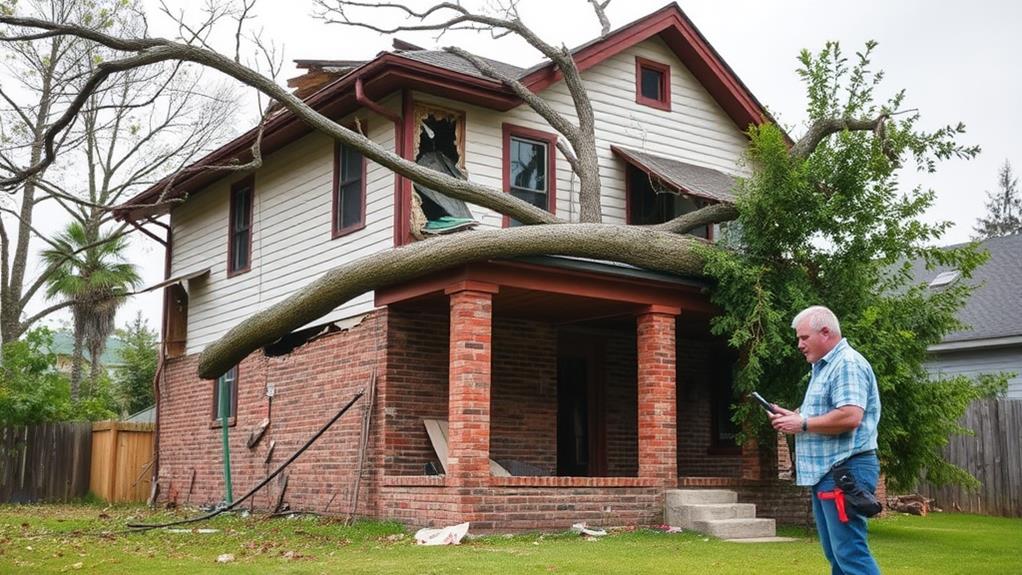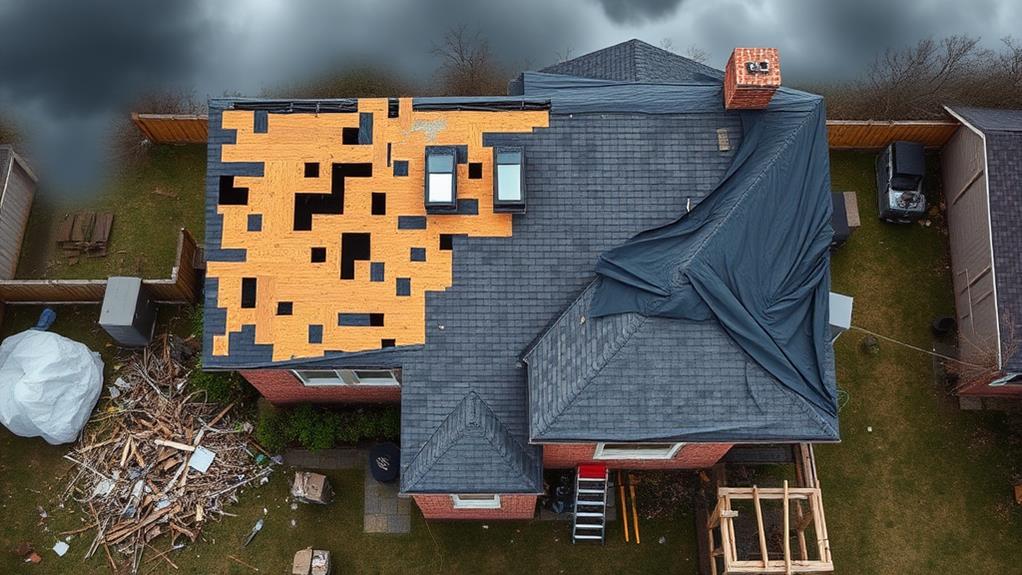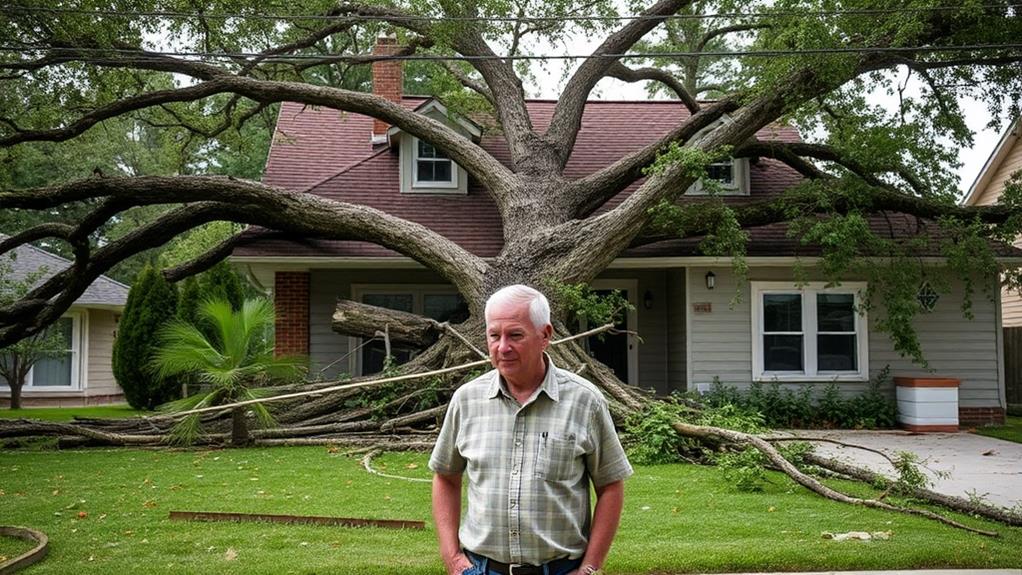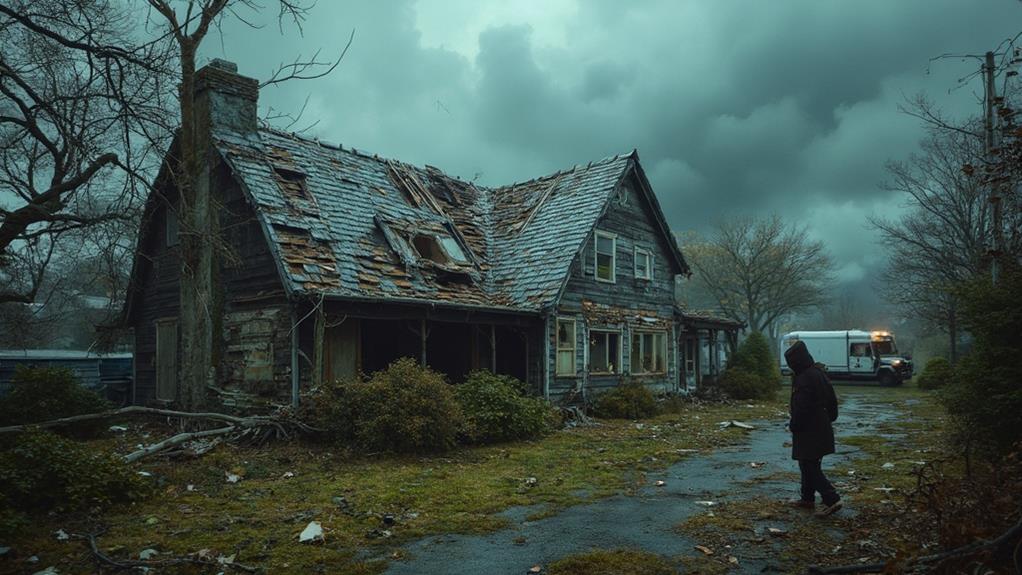Storm damage often requires professional intervention when it exceeds simple DIY repairs. Key indicators include structural integrity concerns, electrical system hazards, extensive roof damage, significant water damage and mold growth, and fallen trees or large debris. These issues pose serious safety risks and can lead to further property damage if not addressed properly. Professional expertise is crucial for accurate assessment, code-compliant repairs, and navigating complex insurance claims. Certified contractors, structural engineers, and licensed electricians possess the necessary skills and equipment to handle severe storm damage safely and effectively. Understanding when to seek professional help can protect both your property and your well-being in the aftermath of a storm.
Structural Integrity Concerns

Three primary structural integrity concerns arise in the aftermath of storm damage. First, foundation damage can occur due to flooding or soil erosion, potentially causing shifts or cracks that compromise the entire structure. Signs include uneven floors, sticking doors or windows, and visible cracks in walls or the foundation itself.
Second, roof damage is a critical issue, as it can lead to water infiltration and further deterioration of the building's structure. Missing shingles, sagging areas, or visible daylight through the attic are indicators of severe roof damage that require professional assessment and repair.
Third, wind damage can weaken load-bearing walls and support beams, jeopardizing the overall stability of the building. This type of damage may not be immediately apparent but can worsen over time if left unaddressed.
Professional structural engineers or experienced contractors should be consulted to evaluate these concerns. They possess the expertise to identify hidden damage and recommend appropriate repairs. Attempting DIY fixes for structural issues can be dangerous and may exacerbate existing problems, potentially leading to costly repairs or even collapse in extreme cases.
Electrical System Hazards
Assessing electrical system hazards is crucial following storm damage to ensure the safety of occupants and prevent further property damage. Storm-related electrical issues can manifest in various ways, including exposed wiring, water-damaged electrical components, and compromised circuit breakers. These hazards pose significant risks of electrocution, fire, and equipment failure.
Signs of potential electrical damage include flickering lights, unusual odors, sparks from outlets, and intermittent power outages. If you notice any of these symptoms, it's essential to avoid using affected circuits and appliances until a professional inspection is conducted. Water-logged electrical systems are particularly dangerous, as moisture can corrode wires and create short circuits.
Professional electricians have the expertise and specialized equipment to safely evaluate and repair storm-damaged electrical systems. They can identify hidden issues, such as moisture infiltration in walls or attics, which may not be immediately apparent. Additionally, they can assess the need for rewiring, panel upgrades, or surge protection to prevent future damage.
Attempting DIY repairs on storm-damaged electrical systems can be extremely hazardous and may violate local building codes. Always prioritize safety and consult a licensed electrician to address storm-related electrical hazards.
Extensive Roof Damage

Gaping holes, missing shingles, and sagging sections often characterize extensive roof damage following severe storms. These issues pose significant risks to the structural integrity of your home and require immediate professional attention. Attempting to repair extensive roof damage without proper expertise can lead to further complications and compromise your safety.
Professional roofers possess the necessary tools, knowledge, and experience to accurately assess the extent of the damage and implement appropriate solutions. They can identify hidden issues that may not be apparent to the untrained eye, such as water infiltration or weakened support structures. Moreover, licensed contractors are equipped to navigate insurance claims and ensure compliance with local building codes.
Addressing extensive roof damage promptly is crucial to prevent secondary problems like water damage, mold growth, and compromised insulation. Professional roofers can also evaluate the need for a full roof replacement versus targeted repairs, considering factors such as the age of the roof and the overall condition of the roofing materials. By entrusting extensive roof damage to qualified professionals, homeowners can ensure a safe, long-lasting restoration of their property's most critical protective element.
Water Damage and Mold
Following severe storms, water damage and mold growth can become serious concerns for homeowners. When water infiltrates a structure due to roof leaks, flooding, or storm-driven rain, it can quickly lead to extensive damage and create an ideal environment for mold proliferation. Signs of water damage include discolored walls or ceilings, warped flooring, and a musty odor.
Professional intervention is crucial when water damage is widespread or affects multiple areas of the home. Experts have specialized equipment to detect hidden moisture and assess the extent of the damage. They can also implement proper drying techniques to prevent further deterioration and mold growth.
Mold can begin to develop within 24-48 hours of water exposure, posing health risks and potentially causing structural damage. If mold growth covers an area larger than 10 square feet, it's essential to call in professionals. They can safely remove the mold, identify and address the underlying moisture source, and implement preventive measures to avoid future outbreaks.
Additionally, professionals can help navigate insurance claims related to storm-induced water damage and mold remediation, ensuring proper documentation and compliance with industry standards for restoration.
Fallen Trees and Debris

Fallen trees and debris pose significant challenges in the aftermath of severe storms. These hazards not only obstruct access to properties but can also cause extensive damage to structures, vehicles, and utilities. While homeowners may be tempted to tackle debris removal themselves, certain situations necessitate professional intervention.
Large trees or heavy branches that have fallen onto buildings or power lines require immediate attention from certified arborists and utility companies. These experts possess the necessary equipment and expertise to safely remove the debris without causing further damage or risking personal injury. Additionally, when trees are uprooted, they can destabilize surrounding soil and potentially impact underground utilities or foundations, necessitating specialized assessment and removal techniques.
Professional services are also crucial when dealing with hazardous materials mixed in with storm debris, such as asbestos from damaged buildings or chemicals from overturned containers. These substances require proper handling and disposal to ensure environmental and personal safety. Furthermore, if the volume of debris exceeds what can be managed with standard household tools, professionals can efficiently clear large areas using heavy machinery and coordinated removal strategies, allowing for faster recovery and reducing the risk of secondary damage from prolonged exposure to the elements.
Insurance Claim Complexities
Insurance claims in the wake of storm damage can be a labyrinth of paperwork and procedures. Navigating this process often requires expertise beyond the average homeowner's knowledge. Insurance policies vary widely in coverage, deductibles, and claim requirements, making it challenging to ensure fair compensation for storm-related losses.
Professional storm damage repair specialists are well-versed in the intricacies of insurance claims. They can accurately assess and document damage, providing detailed reports that satisfy insurance company requirements. These experts understand how to properly categorize different types of storm damage, which is crucial for maximizing claim payouts.
Additionally, professionals can identify hidden damage that may not be immediately apparent, ensuring all storm-related issues are included in the claim. They are also familiar with current repair costs and can challenge lowball estimates from insurance adjusters.
Hiring a professional can expedite the claims process, reducing stress and potential financial loss. They can communicate effectively with insurance representatives, handle negotiations, and ensure all necessary documentation is submitted correctly and on time. This expertise is particularly valuable when dealing with complex claims involving multiple types of damage or disputes over coverage.
Frequently Asked Questions
How Long Does It Typically Take for a Professional to Assess Storm Damage?
The time for a professional to assess storm damage typically varies depending on the extent of damage and property size. Generally, a thorough assessment can take anywhere from 30 minutes to several hours for comprehensive evaluation and documentation.
Are There Any Government Assistance Programs for Storm Damage Repair Costs?
Several government assistance programs exist for storm damage repair costs. FEMA offers disaster assistance, while the SBA provides low-interest disaster loans. Some states also have their own programs. Eligibility criteria and available funds may vary by situation.
Can I Stay in My Home While Professional Repairs Are Being Conducted?
Ironically, your "home sweet home" might become a construction zone. While it's often possible to stay during repairs, safety concerns and disruptions may necessitate temporary relocation. Discuss options with your contractor to make an informed decision.
What Qualifications Should I Look for When Hiring a Storm Damage Repair Professional?
When hiring a storm damage repair professional, look for proper licensing, insurance, and certifications. Seek experienced contractors with positive references, specializing in storm damage repairs. Verify their expertise in handling insurance claims and ensure they offer detailed written estimates.
How Can I Prevent Future Storm Damage to My Property?
As the storm clouds gather, anticipation builds. To safeguard your property, consider these crucial steps: regularly inspect and maintain your roof, trim trees near structures, install storm shutters, secure outdoor items, and ensure proper drainage around your home's foundation.
Conclusion
As storm clouds recede, the true extent of damage emerges. While minor repairs may be tackled by homeowners, certain scenarios demand professional intervention. Structural instability, electrical hazards, and extensive roof damage pose significant risks. Water intrusion and mold growth require swift, expert attention. Fallen trees and complex debris removal exceed typical DIY capabilities. Moreover, navigating insurance claims can be daunting. Recognizing these critical situations ensures safety, proper restoration, and optimal claim outcomes in the aftermath of nature's fury.

